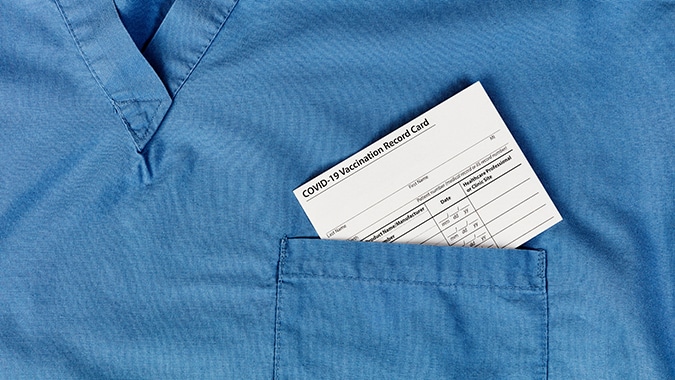The U.S. Department of Labor’s Wage and Hour Division (WHD) and Employment and Training Administration (ETA) both published guidance related to the reopening of schools.
WHD has released Frequently Asked Questions (FAQs) for workers and employers about qualifying for paid leave under the Families First Coronavirus Response Act (FFCRA). The new FAQs explain eligibility for paid leave relative to the varied formats and schedules schools have announced as they plan to reopen, including blending in-person with distance learning. WHD is providing this information to explain the benefits and protections available under both the paid sick leave and the expanded family and medical leave provisions of FFCRA.
“We understand the challenges faced by parents as schools begin to reopen, with their schedules for in-person learning looking very different from those during more traditional school years,” said Wage and Hour Division Administrator Cheryl Stanton. “We want to help ease the burden parents may face while balancing work and family responsibilities by ensuring that everyone understands the access they may have to paid leave, and that employers completely understand their role in this process. Our educational and enforcement work under FFCRA continues to ensure that workers are not faced with having to choose between their jobs and the safety and welfare of their children.”
FFCRA entitles certain employees to take up to two weeks of paid sick leave and take up to 12 weeks of expanded family and medical leave, 10 of which are paid for specified reasons related to the coronavirus. An eligible employee may take both types of paid leave “because of a need to care for the employee’s son or daughter whose school or place of care is closed, or whose child care provider is unavailable, due to the coronavirus related reasons.” Since the Department has received many requests for guidance on this topic, WHD believes publishing these FAQs will help the public, schools and employers clarify eligibility for these benefits. In particular, the FAQs issued today address topics about qualifying for paid leave when a child attends a school operating on an alternate day basis; a parent chooses remote learning when in-person instruction is available; and a school begins the year with remote learning but may shift to in-person instruction if conditions change.
ETA also released guidance that provides states with information regarding the eligibility of individuals who are caregivers for Pandemic Unemployment Assistance (PUA) under the CARES Act.
PUA is designed to provide benefits to certain individuals who are normally ineligible for or who have exhausted entitlement to regular unemployment compensation (UC) or extended benefits (EB). In particular, an individual may be eligible for PUA if they are ineligible for regular unemployment compensation, extended benefits, and pandemic emergency unemployment compensation; and self-certify that he or she is unemployed, partially unemployed, or unable or unavailable to work because, among other possible reasons, “a child or other person in the household for whom the individual has primary caregiving responsibility is unable to attend school or another facility that is closed as a direct result of the coronavirus public health emergency and such school or facility care is required for the individual to work.”
“With back to school season upon us, it is important that the U.S. Department of Labor offer caregivers and parents clear and concise guidance as to their eligibility to receive Pandemic Unemployment Assistance,” said Assistant Secretary for Employment and Training John Pallasch. “Today’s guidance offers the information caregivers and parents need to make important decisions for their households.”
Similar to WHD’s FAQs, ETA’s guidance explains when parents and caregivers may be eligible for PUA under various circumstances related to their child’s school’s reopening plans. More specifically, the guidance explains how states should evaluate an individual’s eligibility for PUA when a child or other person in his or her household for whom the individual is the primary caregiver attends a school operating on an alternate day basis; the individual chooses remote learning for his or her child when in-person instruction is available; and the school remains closed as a direct result of the coronavirus.
Today’s guidance complements a robust and growing library of resources and tools both WHD and ETA provide for workers and employers as they navigate the changes in the workplace brought on by the coronavirus. Resources related to FFCRA paid leave include extensive questions and answers, an online tool for employees to determine their eligibility for paid leave, and short videos and infographics explaining the law’s benefits.
The Department continues to provide updated information through extensive outreach efforts to ensure that workers and employers have the information they need about the benefits and protections of this new law.
WHD provides additional information on common issues employers and employees face when responding to the coronavirus and its effects on wages and hours worked under the Fair Labor Standards Act and on job-protected leave under the Family and Medical Leave Act at https://www.dol.gov/agencies/whd/pandemic. For more information about the laws enforced by WHD, call 866-4US-WAGE, or visit www.dol.gov/agencies/whd.
ETA provides an extensive list of resources relating to the pandemic at https://www.dol.gov/agencies/eta/coronavirus and guidance about unemployment insurance at https://www.dol.gov/coronavirus/unemployment-insurance.
The mission of the Department of Labor is to foster, promote and develop the welfare of the wage earners, job seekers and retirees of the United States; improve working conditions; advance opportunities for profitable employment; and assure work-related benefits and rights.
